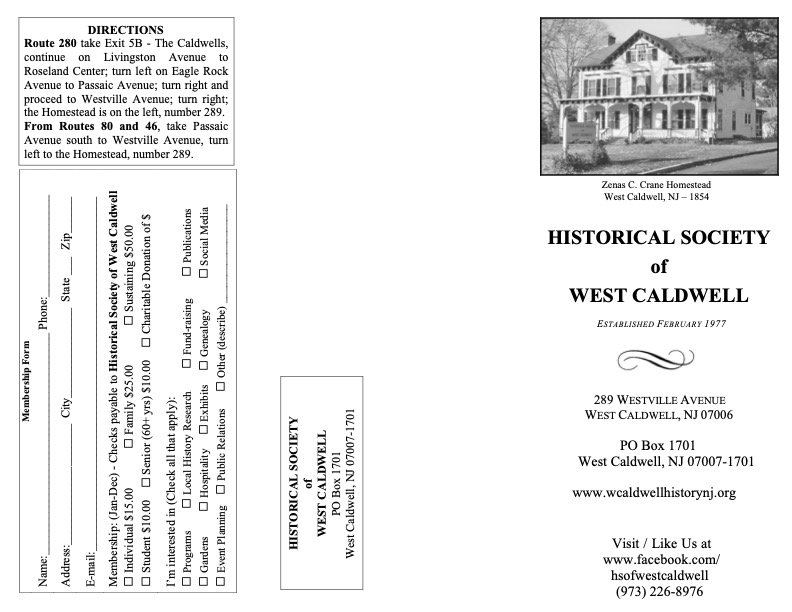Banner
Although the American Revolution ended in 1783, the relationship between
the United States and the British had continued be conflictual. On March 27,
1812 NJ Gov. Joseph Bloomfield, resumed his rank of Brigadier- General of
the First Brigade, First Division of the NJ State Militia, and was ordered in
command of the New Jersey Brigade, which consisted of two batteries of
artillery and four regiments of infantry. This was the third time Gen.
Bloomfield had taken up arms for his country, as he was a veteran of the
Revolution and the Pennsylvania Insurrection. On April 10, 1812, President
James Madison signed into law a bill calling for states to “organize, arm and
equip, according to law and hold in readiness to march at a moment’s
warning, their respective proportions of one hundred thousand militia” and
authorizing one million dollars for payment of the expenses of compliance
with this act. Two weeks later, on April 25, Gen. Joseph Bloomfield, in his
role as Governor of NJ, issued an order to mobilize 5,000 members of the
State Militia. These Militia units were important, as the Federal troop
strength was very low. Artillery, Cavalry and Infantry units were called into
active service, including 441 men from Essex County.
On June 18, 1812 the United States of America declared war on the United
Kingdom of Great Britain and Ireland. In November, 1812 newly elected
Gov. Aaron Ogden ordered that the members of the entire NJ militia hold
themselves in readiness to take the field upon 24 hours notice. “As these
volunteer corps, in all sudden emergencies, form the first and best defense of
the State, it is hoped that such as may be able will display their zeal in
joining themselves to some one or other of these uniform companies, as
circumstances or inclination may lead, thus proving themselves a race of
Jerseymen not unworthy of their fathers.”
Believing that English troops might be landed in the United States and that
the larger seaports, such as New York, Boston and Philadelphia, would be
the first attacked, William Gould, a Caldwell native, followed the example of
Gov. Bloomfield and donned his uniform. He also raised a company of more
than 100 Caldwell Township men, one of the first volunteer companies to be
organized. Gould and his men marched to Paulis Hoeck (now Jersey City) to
help in the defense of New York City and harbor. Brevet General Gould was
placed in command of a regiment of 1200 men and spent several weeks
there. During their stay at Paulis Hoeck, Rev. Mr. Stephen Grover of the First
Presbyterian Church at Caldwell and himself a veteran of the Revolution,
served as regimental Chaplain.
A second detachment of 500 men was sent to rendezvous with the troops at the Paulus Hoeck encampment late in August 1812, relieving the men who had been there since June. Records indicate that one company consisted of Caldwell men, another of men from Orange and the third company of men from all over Essex County.
During the War of 1812, Gen. William Gould commanded the Essex
Brigade, a group of Essex County local militia companies that sought to
provide defense of the shoreline and NY harbor against the British. Gen.
Gould, a veteran of both the Revolution and the Whiskey Rebellion, was
aided in his command of the Essex Squadron by Major Peter Kean, gr-great
grandfather of former Governor Thomas Kean.
At Caldwell, General Gould and his men kept themselves in readiness and
held frequent drills while troop strength continued to build through 1813 and
1814. Many of the NJ soldiers served in independent military detachments
that were not under the direct control of the federal forces. In September of
1814 the Essex County militia companies were combined with those of
Bergen County to form a regiment that was placed under the command of
Brigadier-General William Colfax. The unit was called Colfax's Brigade,
New Jersey Volunteers and Militia. The Chaplain for Colfax’s Brigade was
Rev. Stephen Grover, minister of the First Presbyterian Church at Caldwell.
By the end of 1814, the entire NJ Militia consisted of thirty-six thousand
officers and men, with more than 4,800 on active service. Fourteen Essex
County militia companies went on active duty that September, including one
of Caldwell men.
This flag was donated to the Historical Society of West Caldwell about 1994.
It is approximately 30 1/2” h x 42” w (with hoist ties tied). It is a two-sided
painted flag with different images on each side, against a natural-colored fine
plain weave silk ground. The obverse has a profile image of a uniformed man
on a rearing horse, below a red ribbon that reads “2__ REG: ESSEX
[S]QU[A]DRON” in gilded letters. The reverse of the flag shows the seal of
New Jersey. A red ribbon below its shield reads “CALDWELL TROOP” in
gilded letters.
The flag may also have been carried by an honor guard led by Gen. Gould to
greet Lafayette as he traveled through Caldwell during his visit to the United
States in 1824-25, as he followed Washington’s route from West Point to
Morristown. Peter Kean, who was fluent in French, accompanied Lafayette
during his visit to New Jersey.

